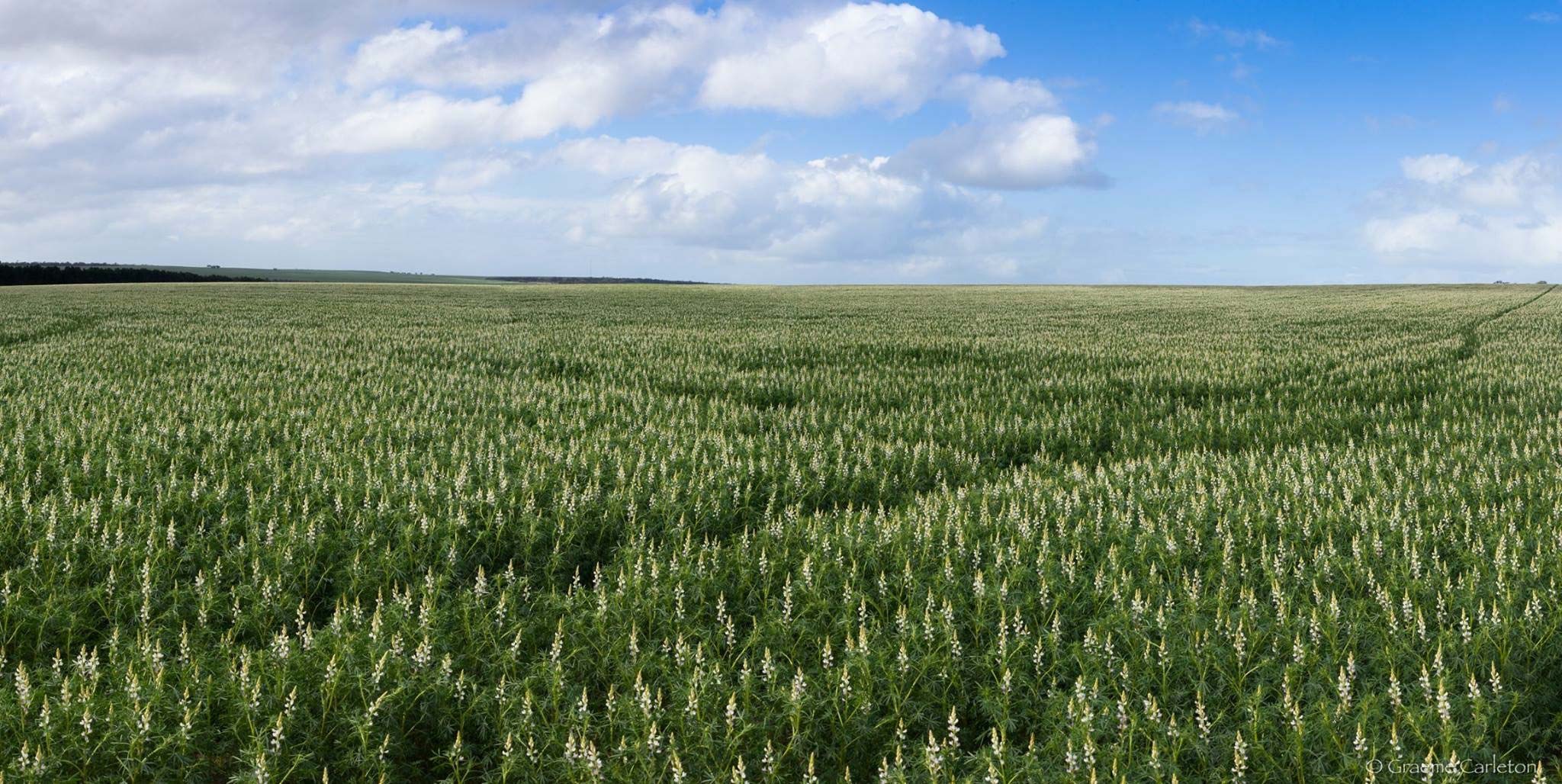Still doing some test baking of the Sweet Lupin product kindly supplied by David from The Lupin Co here in Western Australia,
During the 1960’s a very clever man named Dr John Gladstone from University of Western Australia (UWA), developed one of the first commercial lupin varieties especially for the Australian environment.
This breakthrough changed the agricultural landscape in Western Australia by allowing infertile sandy soils to be farmed in a brand new sustainable way. Lupins act as a natural fertiliser, introducing nitrogen into the soil, therefore reducing the need for chemical fertilisers.
This is why the lupins are one of Australia’s most important crops. Western Australia now grows 85% of the entire world’s entire sweet lupin supply, making them a truly iconic Aussie legume!

i have been playing around with ratios of the LUPIN Flour and LUPIN Flakes in the dough initially i was using a higher percentage of flour to flakes as some work had already been done for David by a baker in South Australia and so i emulated that work to get a feel for the LUPIN inclusion into the dough as well as to taste the end product. Since then i have been trying quite a few combinations each time getting pleasing results . i enlisted a couple of bread taste testers, and also asked fellow Aussie Gavin in Victoria if he would like to come and play and also enlisted Debra Wink to have a go too.
With LUPIN being 40% protein ( not in the form of gluten) as it is gluten free, 3 times more protein than Quinoa, 37% Dietary Fibre, 3 times more than oats , 3 times more potassium than bananas and 3 times more iron than Kale . 4% Carbs and Fructose free,
Why wouldn't you want to include it in your diet!
i have used the flakes and flour at 12.5% each inclusion into the dough and managed to get a good looking and tasting loaf i have found that scalding the Lupin with all the water at boiling point which after a quick stir and set aside to cool resembles cous cous . i weigh up the rest of my ingredients at this time and keep watching the temperature coming down and add the lupin when it reaches the required temp for the mix to achieve its Desired Dough Temp at the completion of the mix. The water component is 80%.
i mix pretty much to the same degree as i do for a normal dough and have been doing a short bulk fermentation of 1 hour as determined by the amount of yeast . i also add an Australian Bread improver @ 0.5% which is the recommended amount for a timed dough. The dough has no trouble doubling in size and handles quite well after degassing and handing up it is given a 10 minute bench rest and then its shaped to the desired shape. The dough does feel a bit different in that its not quite as stretchy or extensible and i have been aware that it does want to unravel at the seam if proofing in a Bannetton not a huge problem as the dough gets rolled out onto the flap if its become undone. the alternative is to proof seam down either in a bannetton or on a couch.
The dough holds it shape well and doubles i have been cornflour washing and applying seeds and scoring at 3/4 proof , and then by the time i've placed my steaming towel into the bottom of the oven and got it ready its time to pop it in the oven The bake times are on par with a normal dough and does have a different baking aroma still very pleasant but different.
My last few bakes i've actually gone big on the L flakes and small on the L flour being 20% and 5% which is the other way round from my starting point. and really pleased with the results
One of my testers has said that she feels far more satisfied from eating this bread and another said she would have trouble going back to her everyday bread..
i will add more and the pictures to this post in the next 24 hours as i need to be somewhere else right now.
regards Derek